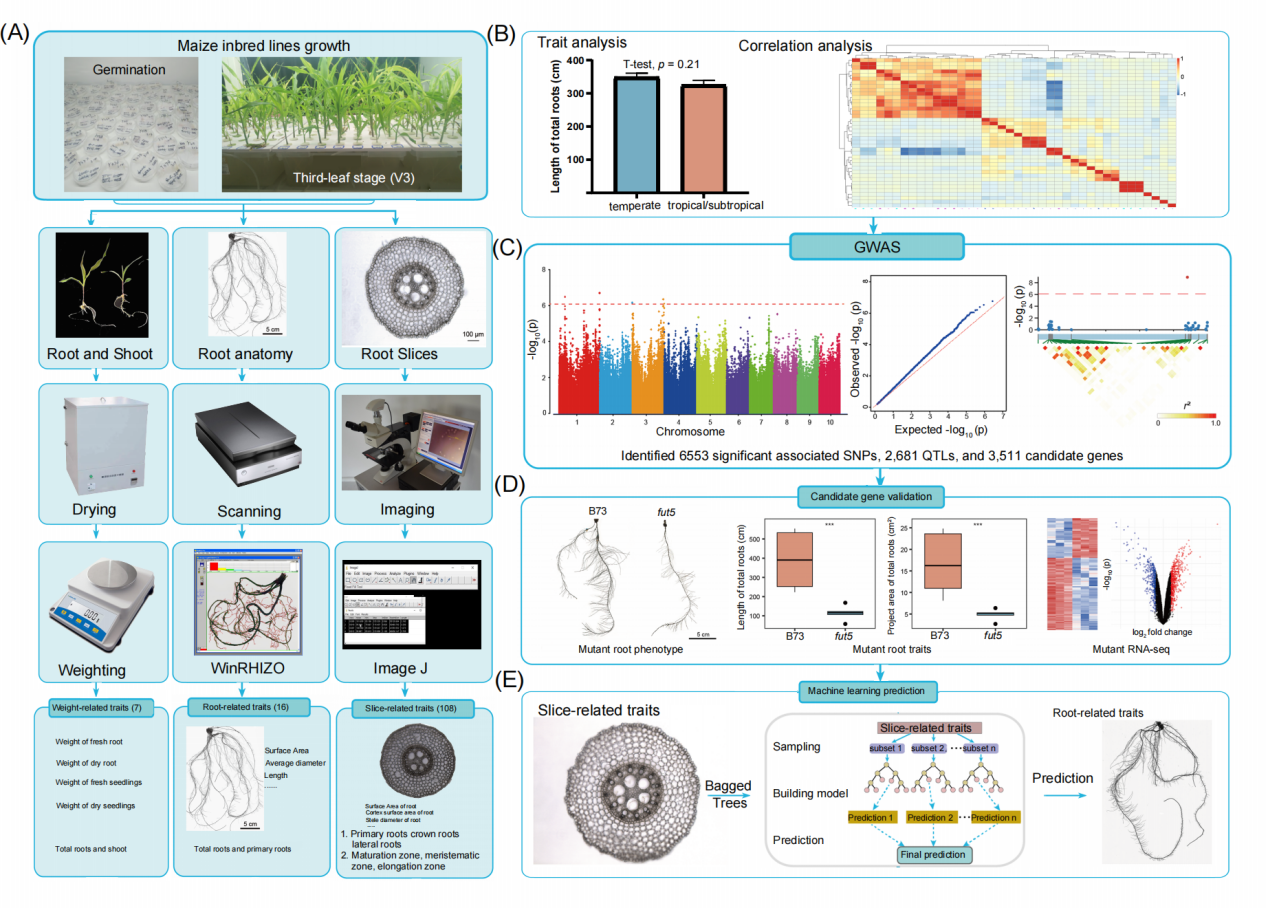Recently, Dr. Li Pu’s group from Biotechnology Research Institute of Chinese Academy of Agricultural Sciences demonstrate that integrating root system architecture (RSA) phenomic data, GWAS, and predictive modeling offers a novel approach to dissect the genetic architecture of maize roots, providing valuable insights for designing breeding strategies and genetic improvement in maize. This research has been published in iMeta with the title “Phenotyping, genome‐wide dissection, and prediction of maize root architecture for temperate adaptability”.
RSA plays an essential role in influencing maize yield by enhancing anchorage and nutrient uptake. Analyzing maize RSA dynamics holds potential for ideotype‐based breeding and prediction, given the limited understanding of the genetic basis of RSA in maize. In this study, the authors obtained 16 root morphology‐related traits (R‐traits), 7 weight‐related trait (W‐traits), and 108 slice‐related microphenotypic traits (S‐traits) from the meristem, elongation, and mature zones by cross‐sectioning primary, crown, and lateral roots from 316 maize lines. Significant differences were observed in some root traits between tropical/subtropical and temperate lines, such as primary and total root diameters, root lengths, and root area. Additionally, root anatomy data were integrated with genome‐wide association study (GWAS) to elucidate the genetic architecture of complex root traits. GWAS identified 809 genes associated with R‐traits, 261 genes linked to W‐traits, and 2577 key genes related to 108 slice‐related traits. the authors confirm the function of a candidate gene, fucosyltransferase5 (FUT5), in regulating root development and heat tolerance in maize. The different FUT5 haplotypes found in tropical/ subtropical and temperate lines are associated with primary root features and hold promising applications in molecular breeding. Furthermore, the authors performed machine learning prediction models of RSA using root slice traits, achieving high prediction accuracy. Collectively, these data offer a valuable tool for dissecting the genetic architecture of RSA, along with resources and predictive models beneficial for molecular design breeding and genetic enhancement.
Dr. Weijun Guo, Dr. Fanhua Wang and Jianyue Lv (PhD student) are the co-first authors. Dr. Li Pu (Professor) and Dr. Laing Le (Associate Professor) are the co-corresponding authors. The research was supported by the Central Laboratory of Biotechnology Research Institute, Chinese Academy of Agricultural Sciences (CAAS). This work was supported by the Biological Breeding‐National Science and Technology Major Project (2023ZD04076), the National Natural Science Foundation of China (32172091), and the Agricultural Science and Technology Innovation Program of Chinese Academy of Agricultural Sciences (ASTIP, CAAS‐ZDRW202503, CAAS‐CSCB202403).
More details can be found at the link::https://onlinelibrary.wiley.com/doi/10.1002/imt2.70015

Figure 1. A flow diagram of the root architecture of maize was revealed by combining high‐throughput phenotypes, genome‐wide association study (GWAS), and predictive models. |